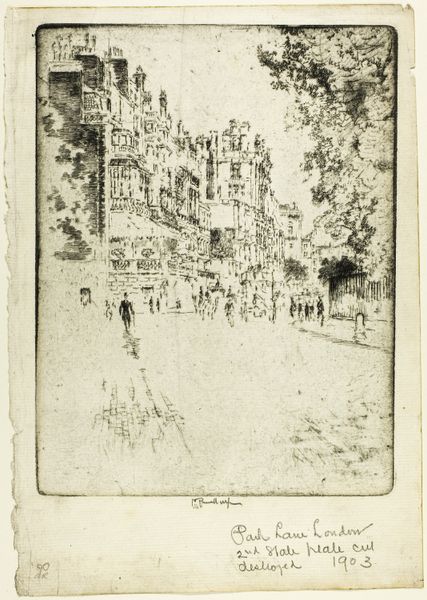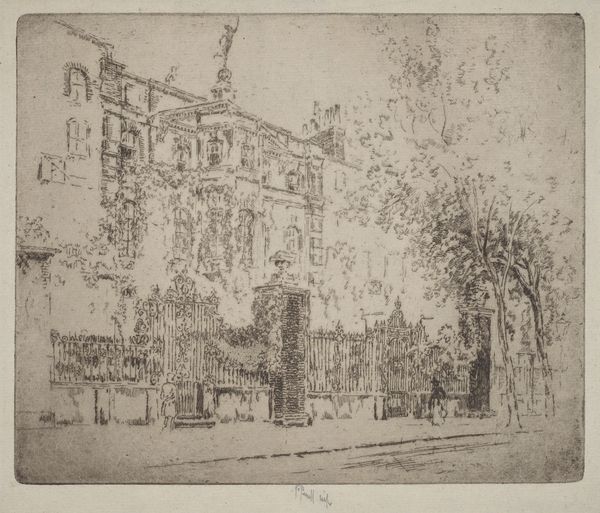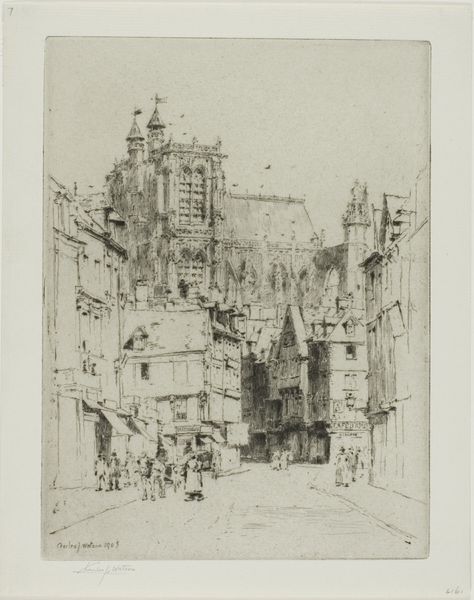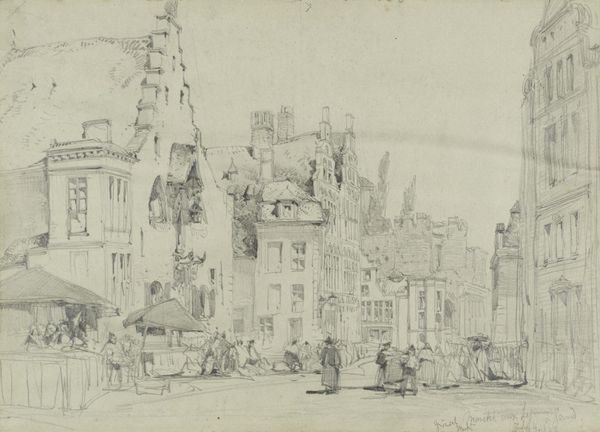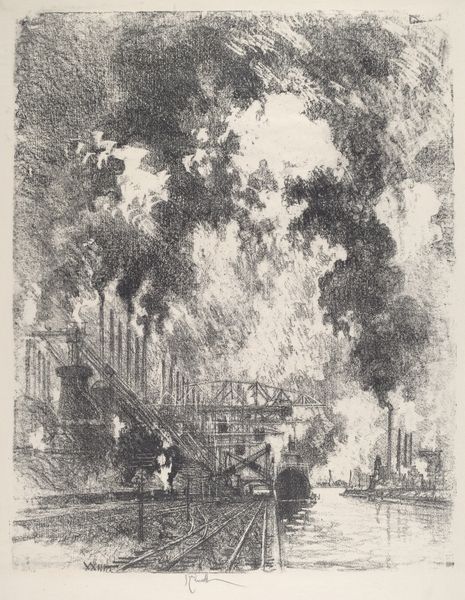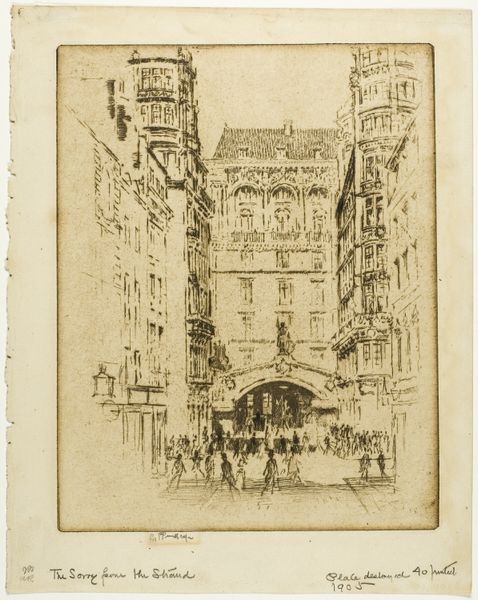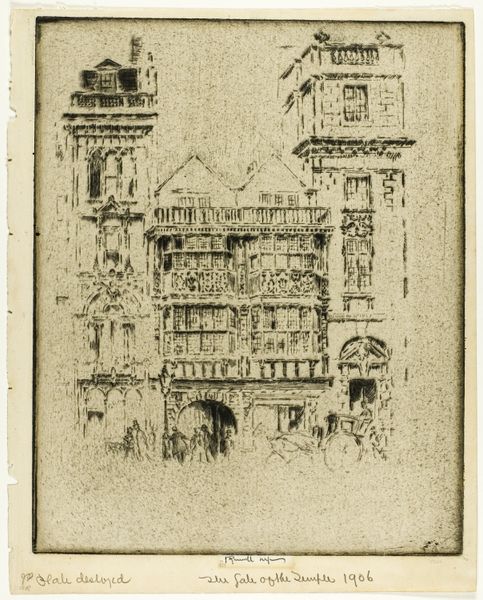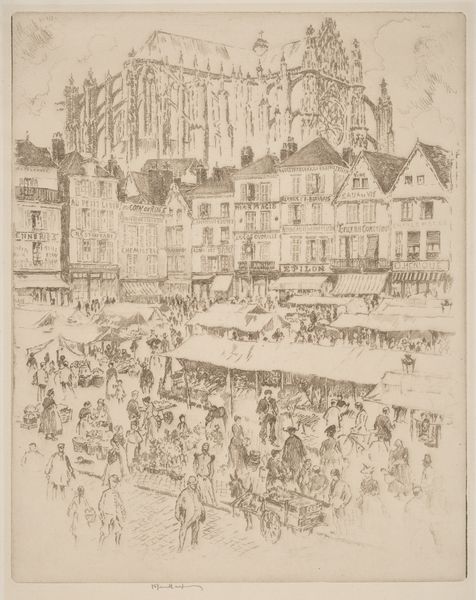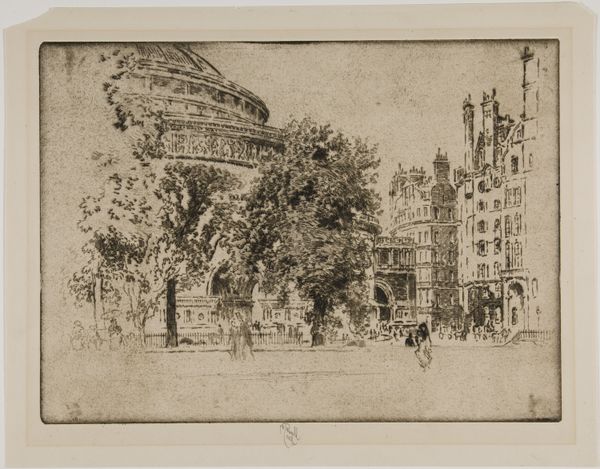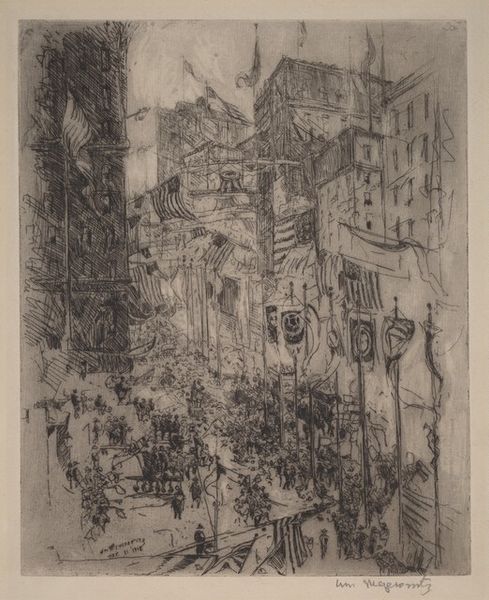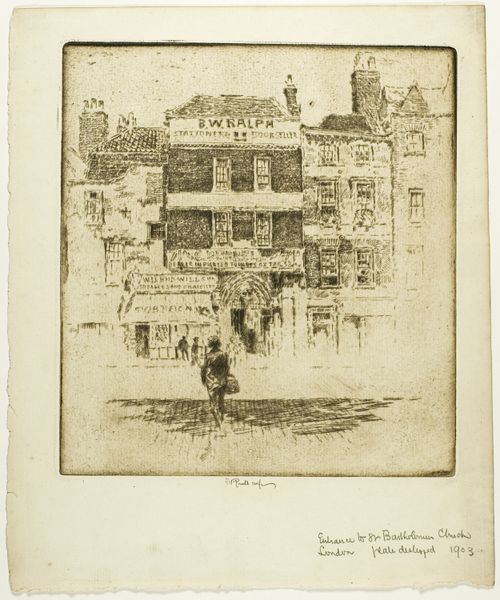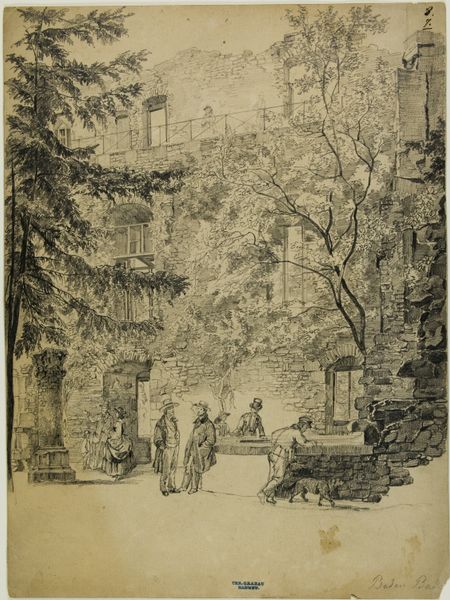
drawing, print, etching, paper
#
drawing
#
ink painting
# print
#
etching
#
etching
#
paper
#
ink drawing experimentation
#
pen-ink sketch
#
united-states
#
pen work
#
watercolour bleed
#
watercolour illustration
#
pencil art
#
marker colouring
#
watercolor
Dimensions: 266 × 204 mm (image); 274 x205 mm (sheet)
Copyright: Public Domain
Curator: Joseph Pennell’s 1904 etching, “Park Lane,” presents us with a bustling city street rendered in delicate lines and washes of ink. Editor: My first thought is atmosphere. It feels veiled, like a memory. The soft grays and whites evoke a sense of transient city life, seen through rain-streaked glass or perhaps a London fog. Curator: It's fascinating how Pennell, trained in industrial design, translates the relentless churn of urban development into art. Etching, a process reliant on acid and metal, becomes a perfect medium to mirror the corrosion and constant transformation of the built environment. The very materials of the work speaks to an industrial age. Editor: Absolutely. And it's more than just a visual record. Consider the symbolic weight of Park Lane itself. Historically, it represented a boundary between the open spaces of Hyde Park and the increasingly dense urban fabric of London. Pennell's blurring of that boundary mirrors the evolving societal values and the increasing intrusion of industry into nature. It hints at a larger dialogue. Curator: You are right to say dialogue, it really encapsulates how industrial labour becomes part of the daily lived experience, captured here so transiently. What's interesting is that although appearing as an impression, the skilled craftsmanship using light and shade makes this highly reproducible and easily available for the rising middle classes to obtain. This contrasts the highly skilled artistic production that was reserved for the higher social classes only a couple of generations prior. Editor: Notice also the figures in the scene, blurred and somewhat indistinct. They’re types, really, not individuals. They serve as markers of activity, symbols of a collective urban experience. Even their hurried movement—indicated by the fleeting strokes of the etching—reflects the anxieties and rhythms of modern life. Curator: Pennell's “Park Lane,” far from being a mere street scene, shows how new media and industrial advancements impacted the ways of living in society through consumption and labor, but you are right in that the lasting imprint on us is that melancholic mood. Editor: A melancholy well-earned, reflecting the perpetual dance between progress and loss. Thanks for making that connection of etching reproduction to labor. Curator: Thanks to you.
Comments
No comments
Be the first to comment and join the conversation on the ultimate creative platform.
